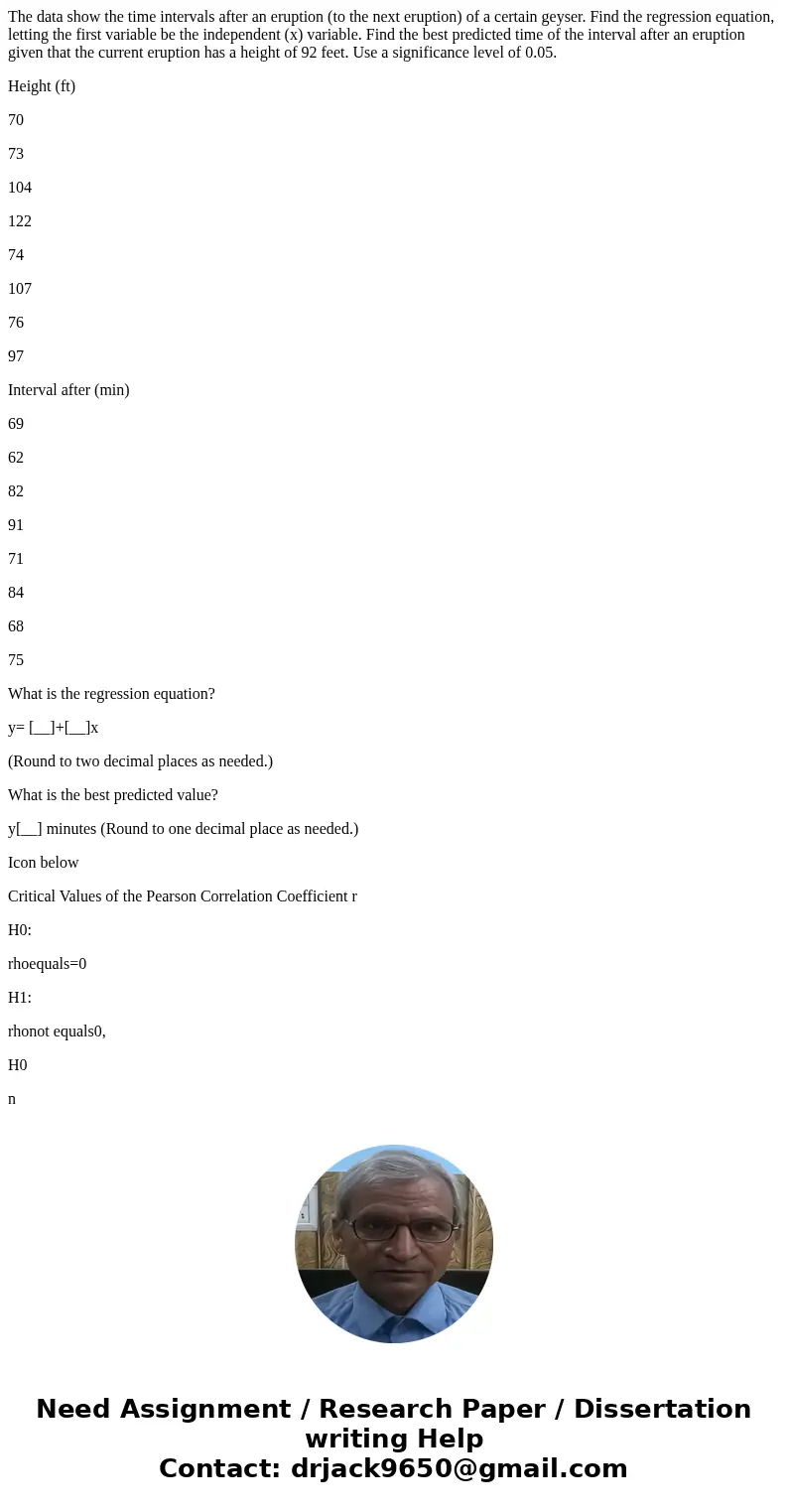The data show the time intervals after an eruption to the ne
The data show the time intervals after an eruption (to the next eruption) of a certain geyser. Find the regression equation, letting the first variable be the independent (x) variable. Find the best predicted time of the interval after an eruption given that the current eruption has a height of 92 feet. Use a significance level of 0.05.
Height (ft)
70
73
104
122
74
107
76
97
Interval after (min)
69
62
82
91
71
84
68
75
What is the regression equation?
y= [__]+[__]x
(Round to two decimal places as needed.)
What is the best predicted value?
y[__] minutes (Round to one decimal place as needed.)
Icon below
Critical Values of the Pearson Correlation Coefficient r
H0:
rhoequals=0
H1:
rhonot equals0,
H0
n
alphaequals=0.05
alphaequals=0.01
4
0.950
0.990
5
0.878
0.959
6
0.811
0.917
7
0.754
0.875
8
0.707
0.834
9
0.666
0.798
10
0.632
0.765
11
0.602
0.735
12
0.576
0.708
13
0.553
0.684
14
0.532
0.661
15
0.514
0.641
16
0.497
0.623
17
0.482
0.606
18
0.468
0.590
19
0.456
0.575
20
0.444
0.561
25
0.396
0.505
30
0.361
0.463
35
0.335
0.430
40
0.312
0.402
45
0.294
0.378
50
0.279
0.361
60
0.254
0.330
70
0.236
0.305
80
0.220
0.286
90
0.207
0.269
100
0.196
0.256
| Height (ft) | 70 | 73 | 104 | 122 | 74 | 107 | 76 | 97 | |
| Interval after (min) | 69 | 62 | 82 | 91 | 71 | 84 | 68 | 75 |
Solution
a)y = 32.866+ 0.469*( Height)......
height = 92..predicted time = 32.866+ (0.469*92) = 76.014......
b) corelation coefficient = cov( height , predicted time) / [ s.d( height) * s.d( predicted time) ]
= 0.951...
sr = sqrt [ ( 1 - r^2) / (n-2) ] = 0.154.......
test statistic = r / sr = 0.951 / 0.154 = 6.175= absolute value...d.f = 8-2 = 6..
p-value = 0.0008..
critical value= 0.950 ( for alpha = 0.05 and d.f = 4)..
so, absolute value > criticalvalue!
so, reject H0 in favour of H1....

 Homework Sourse
Homework Sourse